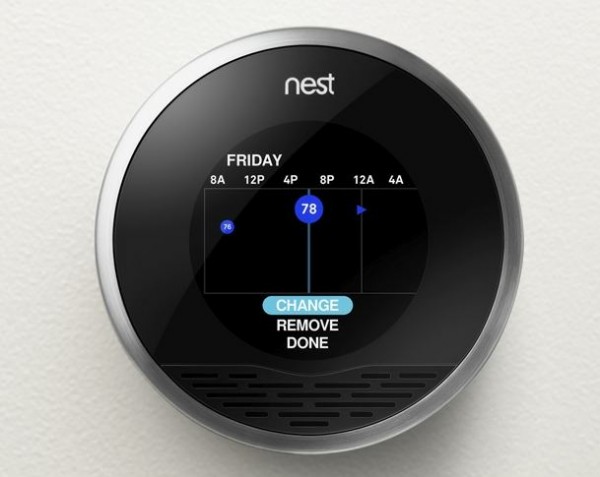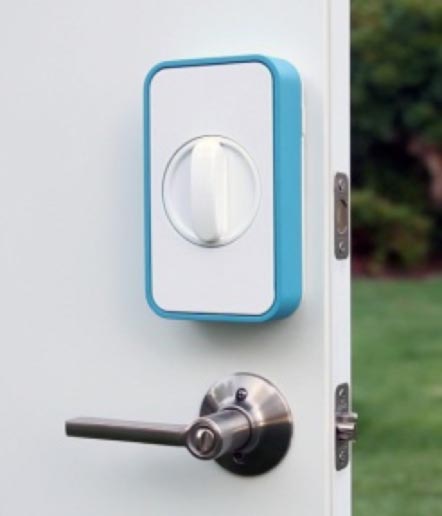Home automation has long been the domain of the upper middle class and wealthy. Expensive, professionally installed proprietary systems have traditionally dominated the home automation landscape.
The rise of mobile tech and ubiquitous wireless communications — combined with less expensive and more powerful sensors and electronics — are finally enabling the availability of relatively affordable devices. Most feature leading-edge functionality and the ability to control them from anywhere in the world using your favorite mobile device. Many of the most compelling products are the efforts of Silicon Valley startups, not entrenched players.
 From monitors that sense when your plants need water to video-capable deadbolts that allow owners to communicate in real time with visitors to smartphone-adjustable multi-color LED bulbs, these domestic tech tools are finally delivering real power and convenience at prices that all of us can at least consider.
From monitors that sense when your plants need water to video-capable deadbolts that allow owners to communicate in real time with visitors to smartphone-adjustable multi-color LED bulbs, these domestic tech tools are finally delivering real power and convenience at prices that all of us can at least consider.
But what can you really get? And how much will it cost? Companies like Nest, Lockitron, Skybell, Dropcam, and LIFX are introducing new consumer-friendly products and services at a rapid pace. Nest (now owned by Google), the most recognized name in home automation, has sold millions of cloud-connected and remotely controlled thermostats and smoke detectors. The appeal of the Nest thermostat is primarily the average annual savings it delivers in the form of decreased heating and cooling bills, so it’s a relatively easy sell (even though tech geeks lust for it for obvious and different reasons). But what about other, lesser known products?
Most home automation devices aren’t as practical as the Nest thermostat in terms of saving money. Many of them provide considerable convenience or safety, however (depending on your use case). For example, LIFX sells high-quality Wi-Fi controllable LED light bulbs. While some of the nicest units on the market, they’re also priced in the zone that gives most middle class consumers the willies: $100 for a single bulb. However, LIFX’s models don’t require a hub controller; you can get started with the purchase of only a single bulb.
 For homes on a budget, but still wanting Wi-Fi controlled bulbs (many of which offer thousands of colors, all selectable from one’s smartphone or tablet), there’s products like Philips’ Hue, with bulb kits beginning at about $185 on Amazon. The entry-level kit nets you a three pack of bulbs and the hub necessary to control them from your Wi-Fi network. Philips promotes the “personalization” of its bulb system, noting that owners can adjust the brightness and color of its bulbs to meet any occasion or mood. Other companies offering LED bulbs that can be controlled by your mobile device include ilumi, which sells units priced from $90 to $100, and Insteon, with bulbs costing a modest $30 — but they require a $115 hub (always read the fine print).
For homes on a budget, but still wanting Wi-Fi controlled bulbs (many of which offer thousands of colors, all selectable from one’s smartphone or tablet), there’s products like Philips’ Hue, with bulb kits beginning at about $185 on Amazon. The entry-level kit nets you a three pack of bulbs and the hub necessary to control them from your Wi-Fi network. Philips promotes the “personalization” of its bulb system, noting that owners can adjust the brightness and color of its bulbs to meet any occasion or mood. Other companies offering LED bulbs that can be controlled by your mobile device include ilumi, which sells units priced from $90 to $100, and Insteon, with bulbs costing a modest $30 — but they require a $115 hub (always read the fine print).
“Smart” locks and doorbells are an interesting and sometimes amusing category of home automation. The top vendors include Lockitron, Kwikset, Skybell, and Doorbot. Lockitron, a Silicon Valley startup, sells a remotely controlled smartlock. The $180 device boasts user-friendly installation and fits over most conventional deadbolts — instead of requiring the replacement of your current lock, like most competing products. The $200 Doorbot takes a different approach, adding a wide angle video camera to the outside doorbell and alerting you to visitors on your smartphone. It’s a full two-way communication system, allowing owners to see visitors and speak to them via an integrated speaker and microphone. It’s even compatible with Lockitron, allowing owners to not only communicate with visitors, but also unlock the door to allow entry into their homes.
The $220 Kevo, from old school deadbolt manufacturer Kwikset, takes automation and convenience even further, providing one-touch admittance to your home by trusted friends and family — as long as they have their smartphone in their pocket. But what if your kids don’t have smartphones? Kwikset provides key fobs that act as authenticators, solving this problem (after the company received a lot of flack from customers for not bundling such fobs with the first release of the product). The Kevo can even detect if a request is coming from inside or outside your home, helping prevent unauthorized entry.
 Such products, because they’re software-controlled, even allow you to schedule access by particular individuals, granting them a permission code that works only during a specific time slot. This is practical for folks who travel for their jobs or simply aren’t home for a plumber, pet care, or other domestic maintenance. And what if the service tech is late? They can ping you and request real-time entry.
Such products, because they’re software-controlled, even allow you to schedule access by particular individuals, granting them a permission code that works only during a specific time slot. This is practical for folks who travel for their jobs or simply aren’t home for a plumber, pet care, or other domestic maintenance. And what if the service tech is late? They can ping you and request real-time entry.
The companies behind these products obviously market them based on convenience and security. It used to be said that most advertising appeals to only two emotions: Greed and fear. I suppose the convenience of these home automation devices points toward our greed, while security enhancement obviously caters to our fear.
This blog post could easily grow to 10,000 words by describing the plethora of home automation products available today to consumers — some of which are really cool, some of which suck, and many of which are not-quite-affordable for people who count themselves among the middle class. For that, you’ll have to wait for my forthcoming book in 2015, Understanding Home Automation. In the meantime, do some Googling to learn if any of these leading-edge products can enhance your particular home with greater security and convenience.
And if the neighborhood kids begin pranking your Doorbot, don’t say I didn’t warn you.
Curt Robbins is author of the following books from Amazon Kindle: Home Theater for the Internet Age ($9.95), Understanding Personal Data Security ($4.99), Understanding Home Theater ($4.99), Understanding Cutting the Cord ($4.99), and Understanding Digital Music ($4.99). You can follow him on Twitter at @CurtRobbins, at rAVe Publications, and on Flickr.
